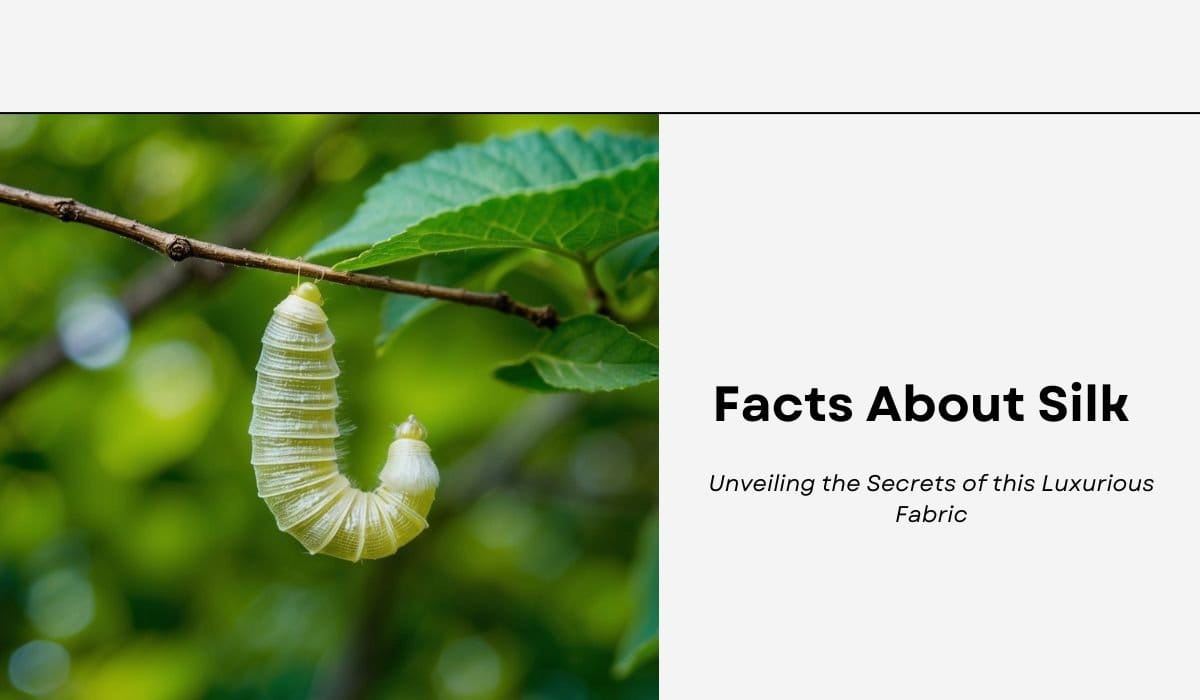From Ancient Trade Routes to Modern Wardrobes: Understanding the World’s Most Coveted Natural Fiber
Silk has captivated humans for millennia with its luxurious feel and lustrous appearance. This remarkable fabric has a rich history dating back to ancient China, where it was first discovered and cultivated. Silk is produced by silkworms, which spin cocoons made of a single continuous thread that can stretch up to 900 metres long.
From its origins in China, silk spread across the globe, becoming a highly prized commodity and sparking trade routes like the famous Silk Road. Today, silk remains a symbol of elegance and sophistication, used in fashion, furnishings, and even medical applications.
On This Page
Key Takeaways
- Silk is a natural fibre produced by silkworms, with a single cocoon yielding up to 900 metres of thread
- China pioneered silk production over 5,000 years ago, leading to the establishment of the Silk Road
- Silk’s versatility extends beyond fashion to various industries, including medicine and technology
The Origin and History of Silk
Silk has played a crucial role in world trade and culture for thousands of years. Its story begins in ancient China and spans across continents through the famous Silk Road.
Ancient China and the Silk Road
The origin of silk production dates back to ancient China, around 3000 BC. Legend tells of Empress Leizu discovering silk when a cocoon fell into her tea. The Chinese kept silk-making a secret for centuries.
Silk quickly became a valuable commodity. It led to the creation of the Silk Road, a network of trade routes connecting China to the West. This historical trade route spread silk across Asia and Europe.
The Silk Road wasn’t just about silk. It facilitated the exchange of goods, ideas, and cultures between East and West. Silk remained a symbol of luxury and wealth throughout this period.
The Global Expansion of Silk Production
Over time, the secret of silk production spread beyond China. By the 6th century AD, the Byzantine Empire had learned silk-making techniques. They established their own silk industry.
Silk production then expanded to other parts of Asia and Europe. Countries like Japan, Italy, and France became important silk producers. Each region developed its own unique silk-making traditions.
Despite this expansion, Chinese silk remained highly prized for its quality. The global spread of silk production had a significant impact on economies and fashion worldwide.
Silk Production and Sericulture
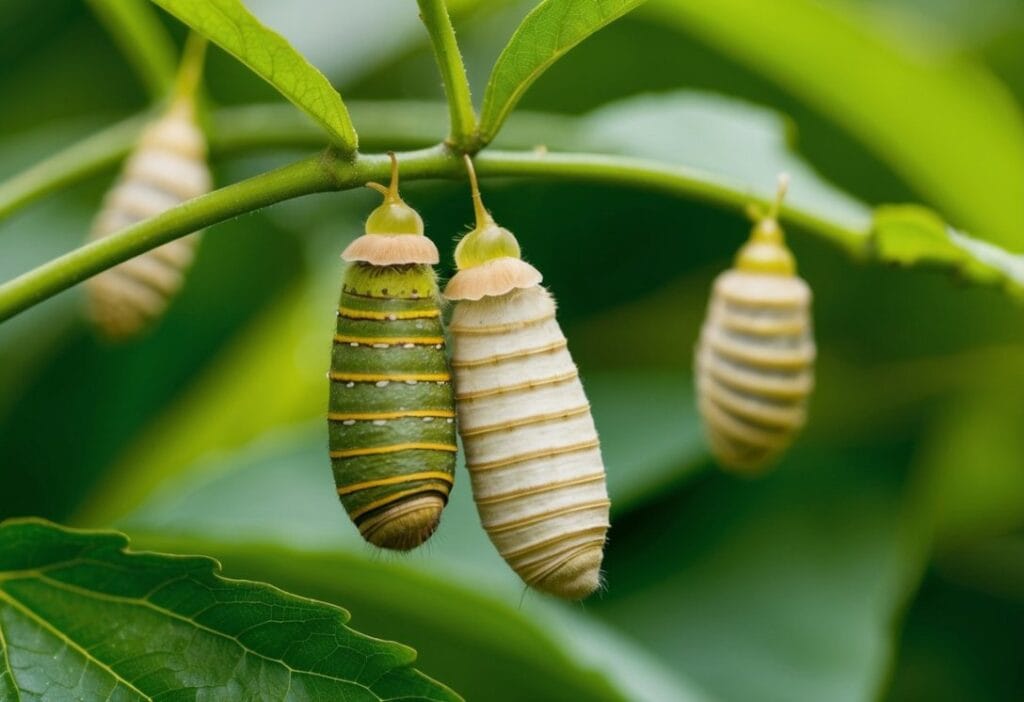
Silk production involves raising silkworms and harvesting their cocoons to create luxurious fabric. This process, known as sericulture, requires careful attention to the silkworm’s lifecycle and environment.
The Lifecycle of the Silkworm
Silkworms, specifically Bombyx mori, go through four main stages. They start as tiny eggs, then hatch into larvae. These caterpillars eat constantly, growing quickly over about 30 days.
When fully grown, silkworms spin cocoons. They use a special gland to produce a single silk thread up to 900 metres long. This process takes 3-4 days.
Inside the cocoon, the larva changes into a pupa. If left alone, it would emerge as a moth. But for silk production, most cocoons are harvested before this happens.
Cultivating Mulberry Silk
Mulberry silk is the most common type. Farmers grow mulberry trees and carefully tend the leaves. They must keep the leaves fresh and free from chemicals.
Silkworms eat only mulberry leaves. They’re very picky eaters! Farmers control temperature and humidity to keep the worms healthy. This care helps produce high-quality silk.
Sericulture requires skill and patience. Farmers must watch for signs of disease and keep the area clean. Good care leads to better silk and higher yields.
Harvesting and Processing Silk Fibres
When cocoons are ready, they’re harvested and sorted. Workers remove any damaged ones. The cocoons are then heated to kill the pupae inside. This step is crucial for unbroken silk threads.
Next, workers find the end of the silk thread and unwind it. This process is called reeling. Several cocoon threads are combined to make one stronger thread.
The raw silk is then cleaned and twisted into yarn. This yarn can be dyed and woven into fabric. The whole process takes skill and care to create the soft, strong material we know as silk.
Types and Varieties of Silk
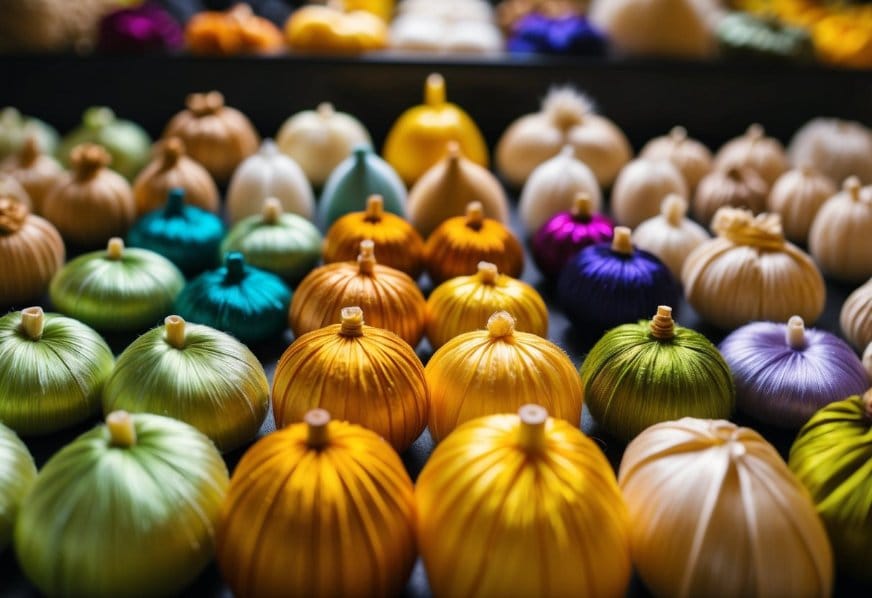
Silk comes in many forms, each with unique qualities. The main types include domesticated silks from cultivated silkworms and wild silks from various moth species. These silks differ in texture, colour, and properties.
Domesticated Silks
Mulberry silk is the most common type. It’s produced by the Bombyx mori moth, which feeds solely on mulberry leaves. This silk is prized for its smooth texture and lustrous appearance.
Raw silk is less processed, retaining the natural sericin coating of the fibres. It has a slightly rougher feel but is highly durable.
Silk chiffon is a lightweight, sheer fabric made from twisted silk yarns. It’s often used in evening wear and scarves due to its ethereal quality.
Wild Silk Varieties
Tussah silk comes from wild silkworms that eat oak and juniper leaves. It has a natural golden or light brown colour and a coarser texture than mulberry silk.
Eri silk, also known as ‘peace silk’, is harvested after the moths have left their cocoons. It’s less shiny than other silks but very strong and wrinkle-resistant.
Muga silk, native to Assam, India, is known for its golden sheen and durability. It’s rare and highly valued.
Comparative Features of Different Silks
Mulberry silk is the softest and most lustrous, ideal for luxurious garments. Tussah silk is more textured and rustic, suitable for casual wear.
Eri silk is warm and cosy, making it perfect for winter clothing. Muga silk is incredibly durable, lasting for years with proper care.
Sea silk, an extremely rare variety, is made from the fibres of certain molluscs. It’s known for its incredible lightness and golden sheen.
Each type of silk has its own strengths, making it suitable for different applications in fashion and textiles.
Properties and Characteristics
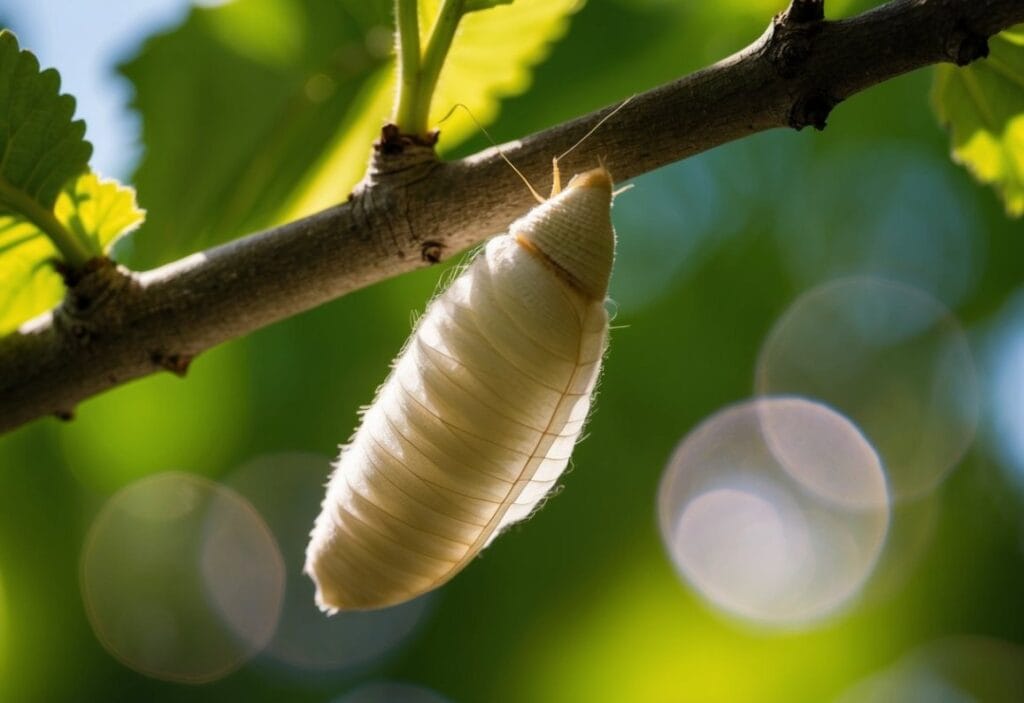
Silk is renowned for its unique blend of qualities that make it a prized textile. It combines strength with softness, creating a fabric that is both durable and luxurious to the touch.
Physical Qualities of Silk
Silk is remarkably strong and elastic, capable of withstanding significant tension without breaking. This strength belies its soft, smooth texture. The fabric is also lightweight, making it comfortable to wear in various climates.
Silk has excellent moisture-wicking properties. It can absorb up to 30% of its weight in moisture without feeling damp. This quality helps regulate body temperature, keeping wearers cool in summer and warm in winter.
Many people find silk hypoallergenic. Its smooth fibres are less likely to irritate sensitive skin compared to some other fabrics.
Silk also resists wrinkles naturally. Its elasticity allows it to return to its original shape after being compressed.
Silk as a Natural Protein Fibre
Silk is a natural protein fibre, composed primarily of fibroin. This protein gives silk its unique properties and structure.
As a protein-based fibre, silk shares similarities with other natural fibres like wool. However, its molecular structure is distinct, contributing to its specific characteristics.
The protein composition of silk makes it biodegradable. This quality aligns with growing environmental concerns in the textile industry.
Silk can be dyed easily and accepts a wide range of colours. This versatility in dyeing contributes to its popularity in fashion and interior design.
Silk in Fashion and Apparel
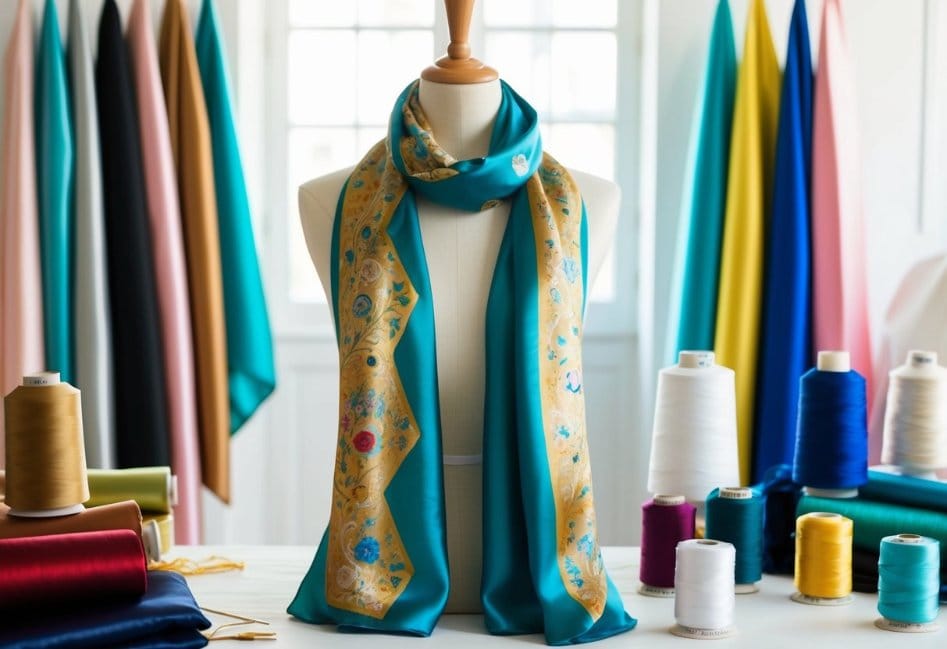
Silk has been a prized fabric in the fashion world for centuries. Its smooth texture and lustrous appearance make it a top choice for both high-end and everyday clothing items.
Silk in Formal and Luxury Wear
Silk is a staple in luxury fashion. It’s often used to create elegant evening gowns and formal suits. The fabric’s natural sheen adds a touch of sophistication to any outfit.
Designers favour silk for its draping qualities. It flows beautifully, creating graceful silhouettes in dresses and skirts. Men’s formal wear also benefits from silk. Silk ties and pocket squares are classic accessories that elevate a suit.
Many red-carpet events feature celebrities in silk attire. The fabric photographs well, catching the light in a way that makes it stand out. Silk’s versatility allows it to be used in various formal styles, from structured blazers to flowing gowns.
Everyday Uses in Clothing and Accessories
Silk isn’t just for special occasions. It’s found in many everyday items too. Silk blouses and shirts are popular choices for office wear, offering comfort and style.
Silk pillowcases and bedding have gained popularity in recent years. They’re said to be gentle on skin and hair, making them a favourite for beauty-conscious consumers.
Silk scarves are versatile accessories. They can be worn in numerous ways, adding a pop of colour to any outfit. Silk sleepwear is prized for its soft feel and temperature-regulating properties.
Some sportswear now incorporates silk. Its lightweight nature and ability to wick moisture make it suitable for athletic clothing. Silk underwear is also popular for its smooth feel against the skin.
Silk in Industry and Technology
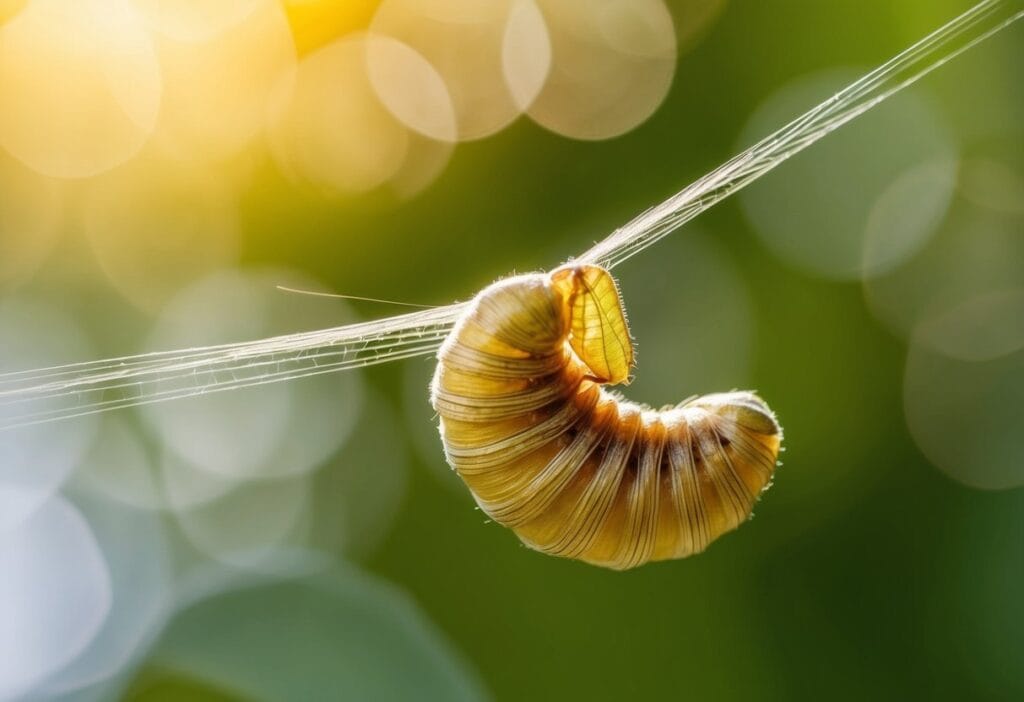
Silk has become a versatile material with applications beyond fashion. Its unique properties make it valuable in medicine and engineering.
Medical Applications
Silk shows promise in healthcare. Doctors use silk sutures to close wounds because they’re strong yet biodegradable. The body absorbs silk threads over time, reducing the need for removal.
Researchers are exploring silk for drug delivery. Its smooth texture allows pills to slide down easily. Scientists are also studying silk scaffolds to help regrow damaged tissue.
Silk bandages may speed up healing. The protein in silk, fibroin, seems to promote skin cell growth. This could help treat burns and chronic wounds.
Silk in Engineering and Aerospace
Engineers value silk for its strength and lightness. Silk fibres are tougher than steel when comparing equal weights. This makes silk ideal for speciality ropes and cords.
The aerospace industry uses silk in parachutes. Silk’s durability and resistance to stretching make it perfect for this job. It can withstand the force of deployment at high speeds.
Some bulletproof vests contain silk layers. The fibres help catch and spread out the impact of bullets. This adds extra protection without much extra weight.
Silk’s thermal properties make it useful in space. It can insulate against extreme temperatures, protecting sensitive equipment.
Cultural Significance and Economic Impact
Silk has played a crucial role in shaping societies and economies throughout history. Its lustrous beauty and rarity made it a coveted material that influenced trade, politics, and social structures across continents.
Silk as a Symbol of Wealth and Status
Silk was often called the queen of fabrics due to its luxurious qualities. Emperors and nobles wore silk garments to display their power and affluence. In ancient China, only the imperial family could wear certain colours of silk.
The material’s scarcity and high value made it a prized possession. Owning silk items signified one’s social standing and prestige. This symbolism extended beyond clothing to home decor and gifts.
Silk’s cultural importance went beyond mere fashion. It was used in religious ceremonies and as burial shrouds for the elite. The fabric’s association with divinity and immortality further cemented its status as a symbol of power.
Economic Importance Through History
The silk industry has been a significant economic driver globally. It accounts for 0.24% of annual global fibre use, highlighting its continued relevance in modern times.
The famous Silk Road, a network of trade routes connecting East Asia and the Mediterranean, facilitated cultural and economic exchange. Silk was a primary commodity traded along this route, fostering diplomatic relations and economic growth.
In the Byzantine Empire, silk production was strictly controlled by the state due to its economic value. Italian city-states like Venice and Florence saw their economies thrive through silk weaving during the Renaissance.
Silk’s economic impact extended beyond trade. It served as a form of currency and was used in diplomacy to strengthen political ties between nations.
Silk Across the Globe
Silk production and use span the globe, with diverse centres and cultural interpretations. This luxurious fabric has woven its way into traditions worldwide, from ancient trade routes to modern fashion capitals.
Production Centres Worldwide
China remains the largest silk producer, accounting for over half of global output. India follows as the second-largest producer, with a rich history of silk cultivation.
Thailand, Brazil, and Vietnam have also emerged as significant silk producers. These countries leverage their climates and mulberry tree cultivation to support silkworm rearing.
India’s silk industry is particularly noteworthy. The country produces all five commercially known types of silk: mulberry, tussar, eri, muga, and spider silk.
Cultural Interpretations and Uses
Silk fabrics hold unique significance in various cultures. In India, silk sarees are essential for weddings and religious ceremonies.
Thai silk is renowned for its lustre and is often used in traditional garments like the phaa sin skirt. Vietnamese silk is prized for its softness and is used in the áo dài, a national costume.
Brazilian silk production blends traditional methods with modern techniques. The country’s silk is often used in high-end fashion and home décor.
Globally, silk textiles are valued for their versatility. From everyday clothing to luxurious evening gowns, silk’s natural properties make it a favourite in diverse applications.
Frequently Asked Questions
Silk has captivated people for millennia with its unique properties and rich history. Its production, uses, and cultural significance span many areas of interest.
What are the primary properties that define silk as a fabric?
Silk is known for its lustrous sheen and smooth texture. It is remarkably strong yet lightweight and has excellent temperature-regulating qualities.
Silk fabric is naturally hypoallergenic and moisture-wicking. These properties make it comfortable to wear in both warm and cool weather.
How is silk utilised in various applications?
Silk has many uses beyond clothing. It is used in parachutes, upholstery, and even some medical applications.
Some cosmetic products contain silk proteins. Silk is also used to make high-quality paintbrushes and musical instrument strings.
What historical significance does the Silk Road hold?
The Silk Road was an ancient network of trade routes connecting East Asia and the Mediterranean. It played a crucial role in cultural exchange between civilisations.
Goods, ideas, and technologies travelled along the Silk Road. This trade network greatly influenced the development of many cultures.
Could you elaborate on the process of silk production?
Silk production, also called sericulture, begins with raising silkworms. The silkworms spin cocoons made of a single continuous silk fibre.
The cocoons are then harvested and the fibres are carefully unwound. This raw silk is then cleaned, twisted, and woven into fabric.
What are some interesting facts about silkworms?
Silkworms are actually caterpillars, not worms. The most common silk-producing species is Bombyx mori, the domesticated silkmoth.
A single silkworm can produce a cocoon with a silk strand up to 900 metres long. It takes about 2,500 silkworms to produce one pound of raw silk.
How has silk influenced fashion trends throughout history?
Silk has been a symbol of luxury and status for thousands of years. In ancient China, only emperors were allowed to wear silk garments.
Throughout history, silk has been used to create elaborate gowns, robes, and accessories. Today, it remains a popular choice for high-end fashion and formal wear.
Related Post: What You Need to Know About Silk Fabric: Essential Facts and Care Tips

